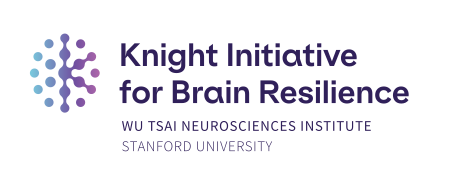The Knight Initiative for Brain Resilience seeks creative and innovative proposals from Stanford faculty of all research or clinical backgrounds that have the potential to generate paradigm-shifting insights into healthy brain aging and resilience against cognitive decline and neurodegenerative disorders.
Stanford faculty of any research or clinical background are encouraged to apply. The grant program is open to all proposals relevant to brain resilience and neurodegeneration.
Click here to go back to the program page
Eligibility
Collaborative, interdisciplinary teams or individual Stanford faculty with PI Eligibility (those with UTL, MCL, and NTL-Research appointments) may apply. Previous PI recipients of an Innovation or Catalyst Award are only eligible to submit as a Co-PI for this RFA. Any individual may only be PI on maximally 1 proposal over the 2-year period of the Program. By submitting a proposal, all PI and Co-PI applicants agree to serve as reviewers for this and future Knight Initiative RFA’s.
Budget
Under this program, applicants may request up to $500,000 in direct costs for a two-year project. The Program plans to fund four to five projects this cycle. The budget period is April 1, 2024, to July 31, 2026, with the possibility of extended funding in the final year of the award, dependent on scientific progress, participation in the Knight Initiative, and availability of Initiative funds.
Submitting an application
- Title of proposed project (150 character limit)
- Lay abstract
- Provide a lay language summary (up to 200 words). This summary may be shared with the public/media for awarded proposals.
- Project keywords
- Research Proposal (PDF Upload, 5 pages total, excluding bibliography)
Layout requirements: maximum 5 pages, including figures, tables & graphs, but not including references.
Formatting: 11-point Arial font, 0.5-inch margins, single-spaced
References: as an addendum to the main 5-page research plan- Background leading to the proposed research
- Specific aims
- Proposed approach and methods
- Plan for dissemination of results, data management and data sharing
- Novelty, impact and outcomes (including how outcomes might be measured)
- Describe why this is the right team for the proposed research, including pertinent experience/accomplishments, and if applicable describe the role of each team member
- Describe the mechanisms and processes for ensuring success & and contingency plans
- Detailed Budget & Justification
- Up to $500,000 in direct costs.
- Budget period: 2024-08-01 to 2026-07-31
- Please note you do not need to have your RPM prepare your budget
- Complete the online budget template for budget and justification, broken down by applicant and high-level expenditure type.
- You can either:
- Download and save as a copy of the budget template, then upload the completed sheet as an Excel file in Slideroom OR
- (Preferred) make a copy of the budget template in Google Sheets and share the link to the completed sheet
- Biosketch (5-page new NIH format, for each participating faculty
- Other Support (also NIH format). Please include both active and pending support
- Diversity Statement
Selection Process and Criteria for ranking submissions:
Projects will be selected for funding based on their relevance to brain resilience and neurodegeneration, innovative scientific merit, and potential for transformative discoveries. Specifically, submissions will be ranked based on the following criteria:
- Scientific Merit & Excellence
- Does this proposal demonstrate research excellence in the given area? e.g., basic science, translational or applied science, etc., relevant in the broader sense to brain resilience and neurodegeneration.
- Impact
- Is this project “out-of-the-box,” and does it have the potential to change how brain resilience neuroscience research is performed and how it impacts society?
- Innovation
- Does the proposal foster creative research that moves beyond traditional conceptual boundaries of what constitutes brain resilience-related neuroscience research?
- Stanford advantage
- Does Stanford have a unique advantage to advance this field in important new ways?
A faculty review committee, co-chaired by a basic science faculty member and a clinical science faculty member, will make funding recommendations to the Knight Initiative director and Steering committee.
